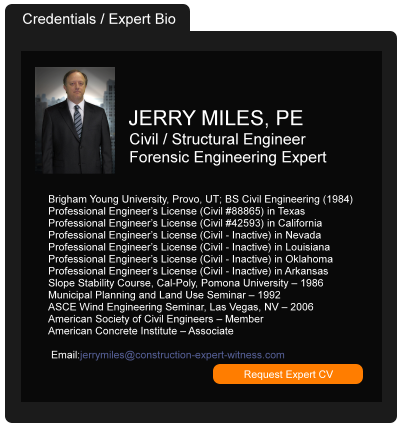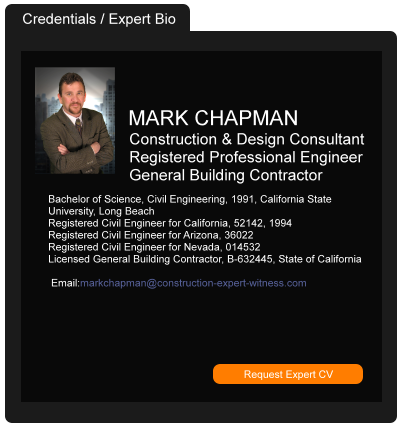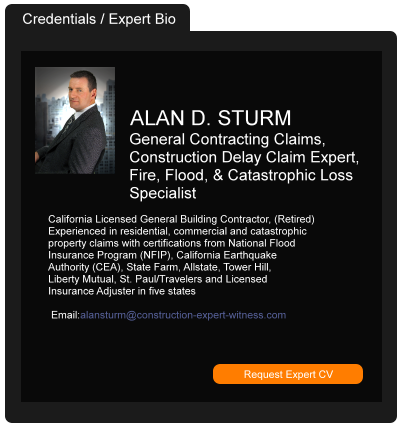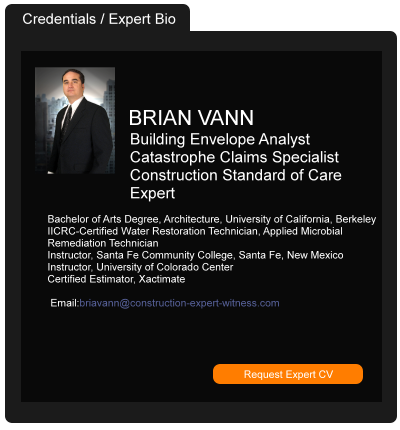Why A.I. Isn’t Going to Replace Lawyers Anytime Soon
April 18, 2023 —
Amir Kahana - Kahana FeldIn a recent article entitled, “A.I. Is Coming for Lawyers, Again” the New York Times explored the longstanding idea that the legal profession is most at risk of being disrupted by A.I. The article claimed that: “There are warnings that ChatGPT-style software, with its humanlike language fluency, could take over much of legal work.” And that: “Law is seen as the lucrative profession perhaps most at risk from the recent advance in A.I. because lawyers are essentially word merchants.”
The problem with these predictions is that they are based on a fundamental misunderstanding of what lawyers do, which is primarily to provide sound advice and formulate sophisticated strategy. All the wordsmithing in the world won’t make a bad case good, or vice versa. Lawyers do not have a Jedi mind trick. We analyze the facts, we make the best arguments possible under the circumstances, we advise our clients on their prospects, and we come up with a strategy for an optimal outcome, which almost always includes a path towards settlement. We are strategists and trusted advisors. Not wordsmithers.
This is not anything ChatGPT or current A.I. can do, or even come close to doing. And how do I know that? Because in a recent Wall Street Journal article, experts on self-driving cars explain that A.I. is nowhere close to being able to drive a car autonomously. In an article entitled “When Will Cars Be Fully Self-Driving?” the experts explain that the main impediment to fully autonomous vehicles is how dumb A.I. is. As one of the leading experts explains, fully autonomous cars “would require human-level artificial intelligence, and there is no commonly accepted theory on how to get there. As long as there is no human-level AI, autonomous mobility will be limited.”
Read the court decisionRead the full story...Reprinted courtesy of
Amir Kahana, Kahana FeldMr. Kahana may be contacted at
akahana@kahanafeld.com
You Have Choices (Litigation Versus Mediation)
December 14, 2020 —
Christopher G. Hill - Construction Law MusingsAs I sit here thinking about an impending trial in the Goochland County General District Court, it hit me that I also serve as a mediator in that court from time to time. Coincidentally, I will be “wearing both hats” (litigator and mediator) this week on back to back days. It will be interesting to have to switch roles so quickly on back to back days.
While I don’t have the results of this thought experiment as I sit here typing this post, the timeline does bring into focus the two possible avenues to resolve a dispute. Neither is perfect and either works in the proper situation. Both lend a final “result” and closure to the dispute, they just each do so in a different manner and with a different role for me, the construction attorney/construction mediator.
Read the court decisionRead the full story...Reprinted courtesy of
The Law Office of Christopher G. HillMr. Hill may be contacted at
chrisghill@constructionlawva.com
The New York Lien Law - Top Ten Things You Ought to Know
December 23, 2023 —
Ralph E. Arpajian - White and Williams LLPOver the course of my career, I have had the privilege of working with and representing numerous construction lenders (and borrowers/developers) in the financing of some of the largest commercial projects in the United States.
A number of these projects have been in New York, where one encounters the New York Lien Law (the “Lien Law”). Many of my clients, particularly those lenders, borrowers, and their counsel, located outside of New York, are often perplexed by my advice regarding the Lien Law and the loan structuring requirements which result. In the hope that it would be helpful (especially for non-New York counsel), I have compiled a “top ten” list outlining, in my view, the most critical (and most perplexing) aspects of structuring New York construction loans under the Lien Law.
Read the court decisionRead the full story...Reprinted courtesy of
Ralph E. Arpajian, White and Williams LLPMr. Arpajian may be contacted at
arpajianr@whiteandwilliams.com
CGL, Builders Risk Coverage and Exclusions When Construction Defects Cause Property Damage
May 17, 2021 —
Jeffrey Cavignac - Construction ExecutiveDirect damage to property under construction caused by faulty or defective work or defective materials has been a coverage issue for decades. Two specific policies, the Commercial General Liability for the contractors building the structure and the Builders Risk Policy on the project both are sources of potential coverage.
A CGL policy protects the named insured (the contractor in this case) from third party liability arising out of the insured’s operations that results in either bodily injury or property damage. Damage to property caused by poor workmanship or defective materials would qualify as property damage. To understand how the CGL policy might respond to claims such as these, it is necessary to evaluate several exclusions in the CGL policy.
CGL policies cover “property damage,” defined as physical injury to tangible property, including loss of use of such property, and loss of use of tangible property that has not been physically injured.
Reprinted courtesy of
Jeffrey Cavignac, Construction Executive, a publication of Associated Builders and Contractors. All rights reserved.
Read the court decisionRead the full story...Reprinted courtesy of
2017 Susan G. Komen Race for the Cure
March 01, 2017 —
Haight Brown & Bonesteel LLPAs a part of our 80 acts of Kindness commitment, Haight has registered a team to walk/run in the Susan G. Komen Race for the Cure Event taking place Saturday, March 11, 2017 at Dodger Stadium from 7:00 a.m. - 11:30 a.m.
We have a great group of partners, associates, and staff joining the Haight team to walk or run in support of the Susan G. Komen Foundation. For over 30 years, the Foundation’s efforts have funded life-saving breast cancer research and provided support to the thousands of women and men battling the disease.
For 80 years, Haight Brown & Bonesteel has been one of California’s leading full service law firms. To commemorate our 80 years in business, we are giving back to the community. Throughout 2017, we will demonstrate our commitment to those in need through 80 different acts of kindness.
Read the court decisionRead the full story...Reprinted courtesy of
Haight Brown & Bonesteel LLP
New Safety Requirements added for Keystone Pipeline
June 11, 2014 —
Beverley BevenFlorez-CDJ STAFFAfter learning about construction defects on the “southern leg of the Canada-to-Texas project,” safety regulators have added two additional conditions “on construction of TransCanada Corp.’s Keystone XL oil pipeline,” according to Claims Journal. The defects, which have been fixed, included “high rates of bad welds, dented pipe and damaged pipeline coating.”
The first condition requires “TransCanada to hire a third-party contractor chosen by the pipeline safety agency to monitor the construction” and report to the U.S. government, while the second condition requires “TransCanada to adopt a quality management program.”
Both conditions were “buried near the end of the 26 appendices in a voluminous environmental impact statement on Keystone XL released by the State Department on Jan. 31.”
Read the court decisionRead the full story...Reprinted courtesy of
ASCE Joins White House Summit on Building Climate-Resilient Communities
October 09, 2023 —
The American Society of Civil EngineersRESTON, Va. – The White House Climate Policy Office hosted the Summit on Building Climate Resilient Communities today and unveiled its
National Climate Resilience Framework for communities to build more resiliently as they face increasingly severe weather events. The framework features comprehensive recommendations and opportunities for action, including partnerships between federal agencies and leading standards development organizations such as the
American Society of Civil Engineers (ASCE), to improve the resilience of buildings and other infrastructure. ASCE president Maria Lehman, P.E., was in attendance for the Summit.
ASCE's most widely adopted standard,
ASCE 7-22, is the primary reference of structural design requirements in all U.S. building codes and is updated every six years to reflect the latest data and trends presented by an ever-changing climate. Its most recent update, published in 2022, includes updates to environmental hazards used for building design including new wind speeds along the hurricane coastline, a completely new chapter for tornado loads, and the most substantial update to its chapter on flood loads since the inception of ASCE 7-22 – calling for structures to be built to withstand 500-year floods rather than the previous standard of 100-year flood mitigation.
Although modern codes and standards, such as ASCE 7-22, can mitigate climate hazards, many communities throughout the U.S. have not yet adopted these practices. The new White House framework calls for ensuring federal funding requires climate-resilient infrastructure investments by encouraging government at all levels to adopt consensus-based engineering standards, which would go a long way towards addressing vulnerabilities posed by future climate impacts.
ASCE, in conjunction with industry leaders represented at the Summit, supports federal efforts to improve climate data, enforce the most stringent codes and standards, and provide technical assistance to building and infrastructure stakeholders. To learn more about environmental hazard mitigation resources, follow
ASCE's Pathways to Resilient Communities Toolkit, a plain-language guide for federal, state, and local leaders as they seek out standards, best practices, data, and strategies that can be implemented to safeguard communities across the country from increasingly severe weather events.
ABOUT THE AMERICAN SOCIETY OF CIVIL ENGINEERS
Founded in 1852, the American Society of Civil Engineers represents more than 150,000 civil engineers worldwide and is America's oldest national engineering society. ASCE works to raise awareness of the need to maintain and modernize the nation's infrastructure using sustainable and resilient practices, advocates for increasing and optimizing investment in infrastructure, and improve engineering knowledge and competency. For more information, visit www.asce.org or www.infrastructurereportcard.org and follow us on Twitter, @ASCETweets and @ASCEGovRel.
Read the court decisionRead the full story...Reprinted courtesy of
MBS’s $500 Billion Desert Dream Just Keeps Getting Weirder
August 29, 2022 —
Vivian Nereim - BloombergOne day last September, a curious email arrived in Chris Hables Gray’s inbox. An author and self-described anarchist, feminist, and revolutionary, Gray fits right into Santa Cruz, Calif., where he lives. He’s written extensively about genetic engineering and the inevitable rise of cyborgs, attending protests in between for causes such as Black Lives Matter.
While Gray had taken some consulting gigs over the years, he’d never received an offer like this one. The first shock was the money: significantly more than he’d earned from all but one of his books. The second was the task: researching the aesthetics of seminal works of science fiction such as Blade Runner. The biggest surprise, however, was the ultimate client: Mohammed bin Salman, the 36-year-old crown prince of Saudi Arabia.
MBS, as he’s known abroad, was in the early stages of one of the largest and most difficult construction projects in history, which involves turning an expanse of desert the size of Belgium into a high-tech city-region called Neom. Starting with a budget of $500 billion, MBS bills Neom as a showpiece that will transform Saudi Arabia’s economy and serve as a testbed for technologies that could revolutionize daily life. And as Gray’s proposed assignment suggested, the crown prince’s vision bears little resemblance to the cities of today. Intrigued, Gray took the job. “If I can be honest with how I see the world, I’ll pretty much put my work out to anyone,” he says.
Read the court decisionRead the full story...Reprinted courtesy of
Vivian Nereim, Bloomberg


































































